Discover Filter Stories - Coffee Documentaries
Filter Stories - Coffee Documentaries

Filter Stories - Coffee Documentaries
Author: James Harper
Subscribed: 15,092Played: 68,015Subscribe
Share
© Copyright James Harper
Description
Coffee stories with an extra shot of history and science.
Filter Stories is a podcast revealing coffee’s hidden microscopic secrets, its powerful past, and how your choice of beans impacts tens of millions of people.
See the behind-the-scenes stories on Instagram @filterstoriespodcast.
If you haven’t already, please subscribe to the show and review us on Apple Podcasts and Spotify!
Filter Stories is a podcast revealing coffee’s hidden microscopic secrets, its powerful past, and how your choice of beans impacts tens of millions of people.
See the behind-the-scenes stories on Instagram @filterstoriespodcast.
If you haven’t already, please subscribe to the show and review us on Apple Podcasts and Spotify!
72 Episodes
Reverse
For twenty years, the 2004 cupping form profoundly shaped the specialty coffee world.
But on the hillsides of coffee farms, some of the form’s byproducts have been disadvantaging producers.
In this episode, we follow two producers whose lives collided with the myth of universal quality. These stories reveal how a single idea of “quality” can close doors for the people with the least power in the supply chain.
The new coffee evaluation form, the CVA, is still young, and with any luck it will keep evolving. I hope for a form that can empower even the smallest producers.
Please support my work directly at Ko-fi.com/FilterStories
Other ways you can help:
Leave a 5 star rating on Spotify
Follow me on Instagram and tag me in an Instagram story
Write a review on Apple Podcasts
Discover how I make these Filter Stories episodes by subscribing to my Substack newsletter
Go deeper into the story of quality:
The original Filter Stories episode about Murray Cooper in Ecuador, Firefly
Specialty Coffee Association's new Coffee Value Assessment
2004 cupping form from the Specialty Coffee Association of America
SCAA Coffee Cuppers Handbook (4th edition, 2011)
Kenneth Liberman's book, "Tasting Coffee: An Inquiry into Objectivity"
SCA's video series on the CVA presented by Peter Giuliano
Join me at World of Coffee Dubai, 18-20 January. Grab your tickets here.
What does the Marco MilkPal look like to you? WALL-E? Something Steve Jobs would be proud of? Check it out here.
If you ask two specialty professionals what makes a high-quality coffee, you’ll likely get a surprisingly consistent answer: clean, sweet, juicy, bright. To an outsider, they would be forgiven for thinking coffee quality is universally defined.
But the truth is more sober.
In this episode, we examine how a simple cupping form helped create a universal idea of quality. We then look at the evidence that, in fact, it’s just the personal preferences of a small group of people masquerading as universal quality.
Please support my work directly at Ko-fi.com/FilterStories
Other ways you can help:
Leave a 5 star rating on Spotify
Follow me on Instagram and tag me in an Instagram story
Write a review on Apple Podcasts
Discover how I make these Filter Stories episodes by subscribing to my Substack newsletter
Go deeper into the story of quality:
2004 cupping form from the Specialty Coffee Association of America
SCAA Coffee Cuppers Handbook (4th edition, 2011)
Cup of Excellence cupping form
Kenneth Liberman's book, "Tasting Coffee: An Inquiry into Objectivity"
SCA's video series on the CVA presented by Peter Giuliano
Join me at World of Coffee Dubai, 18-20 January. Grab your tickets here.
What does the Marco MilkPal look like to you? WALL-E? Something Steve Jobs would be proud of? Check it out here.
For the longest time, coffees were dull and bitter. But then a small group of pioneers changed the world.
In this episode, we travel back to the 1960s and ’70s to meet the trailblazers who realised coffees could taste distinctive: sweeter, brighter, cleaner.
We discover how their personal preferences became a movement, then a form, and eventually a global definition of “quality”.
Please support my work directly at Ko-fi.com/FilterStories
Other ways you can help:
Leave a 5 star rating on Spotify
Follow me on Instagram and tag me in an Instagram story
Write a review on Apple Podcasts
Discover how I make these Filter Stories episodes by subscribing to my Substack newsletter
Go deeper into the story of quality:
Specialty Coffee Association's new Coffee Value Assessment
2004 cupping form from the Specialty Coffee Association of America
SCAA Coffee Cuppers Handbook (4th edition, 2011)
Michael Sheridan of CQI discussing the inter-organisational politics behind the Houston Expo announcement on Lee Safar's Map It Forward podcast
Join me at World of Coffee Dubai, 18-20 January. Grab your tickets here.
What does the Marco MilkPal look like to you? WALL-E? Something Steve Jobs would be proud of? Check it out here.
For the longest time, the coffee community only cared about water’s impact ruining espresso machine boilers and kettles. But what about water’s impact on coffee flavour?
In this episode, I tell the story of how the specialty coffee community came to understand water chemistry: the pioneering work of the computational chemist Christopher Hendon and British roaster Maxwell Colonna-Dashwood, the genesis of the SCA’s Water Quality Handbook, and where we are today understanding the impact of minerals on our water.
I strongly recommend listening to the two episodes before this one first Getting great water for coffee, step-by-step & The two ingredients in water that ruin your coffee, and the ancient story behind them
Please spread the word about The Science of Coffee!
Leave a 5 star rating on Spotify
Follow me on Instagram and tag me in an Instagram story
Write a review on Apple Podcasts
Discover how I make these Filter Stories episodes by subscribing to my Substack newsletter
Want to go deeper into water chemistry?
Read the SCA’s Water Quality Handbook
BWT White Paper on the effects of magnesium (German)
Christopher Hendon’s Instagram where he’ll announce his new version of his book, Water for Coffee
Do an online Certificate of Advanced Studies at the Coffee Excellence Centre
Season 3 of The Science of Coffee is made possible by these leading coffee organisations:
The Coffee Quest | BWT | TODDY | Algrano | Probat
Note: this is a reworked version of my 2022 episode Water for Brewing Coffee, including portions of my 2024 episode How to think like a scientist, part 2.
Join me at World of Coffee Dubai, 18-20 January. Grab your tickets here.
What does the Marco MilkPal look like to you? WALL-E? Something Steve Jobs would be proud of? Check it out here.
550 million years ago, earth was perfect. We had perfect water for coffee AND we were living in a vegetarian paradise!
But then Earth changed—violently. The planet shifted from a peaceful, plant-eating paradise to a darker, more brutal world. And in this new world, the chemistry of water was forever altered.
This is the wild story of how earth-shaking forces and the spirits of long-dead critters ruin your coffees today.
This story will help you remember the two invisible ingredients in your water that have a huge impact on coffee flavour and your brewing equipment: calcium and hydrogen carbonate.
Read Marcia Bjonerud’s amazing book, Reading the Rocks
Please spread the word about The Science of Coffee!
Leave a 5 star rating on Spotify
Follow me on Instagram and tag me in an Instagram story
Write a review on Apple Podcasts
Discover how I make these Filter Stories episodes by subscribing to my Substack newsletter
Season 3 of The Science of Coffee is made possible by these leading coffee organisations:
The Coffee Quest | BWT | TODDY | Algrano | Probat
Note: this is a reworked version of my 2022 episode Water for Brewing Coffee.
Join me at World of Coffee Dubai, 18-20 January. Grab your tickets here.
What does the Marco MilkPal look like to you? WALL-E? Something Steve Jobs would be proud of? Check it out here.
Water massively impacts your coffee’s flavours. But most of us struggle to fix our water because water science is confusing…
…until now! In this special collaboration with Lucia Solis (Making Coffee podcast), I guide her through the two most important concepts you need to understand to get great-tasting water for coffee: hardness and alkalinity.
We go step-by-step through:
• Why these concepts matter for coffee flavour and equipment
• How to test your water at home
• How to fix it, depending on what you’re working with
These aren’t one of my usual narrative episodes—they’re a straightforward, practical guide to help you take control of your water.
By the end of these episodes, you’ll be able to say: “I know what good water for coffee is and how to get it”.
I hope it helps you as much as it helped Lucia.
Check my website for all the visuals mentioned in this episode, including:
SCA graph for excellent water (the “map”)
Map of different water hardness across Paris
My Berlin water report
The nightmarish table of conversions…
Results from my water tests in my Berlin studio
Bottled water brands rated for their hardness and alkalinity
Please spread the word about The Science of Coffee!
Leave a 5 star rating on Spotify
Follow me on Instagram and tag me in an Instagram story
Write a review on Apple Podcasts
Discover how I make these Filter Stories episodes by subscribing to my Substack newsletter
Resources mentioned in the episode:
SCA’s Water Quality Handbook
Hardness and alkalinity dripper testing kit (also good for keeping your fishies happy)
BWT Penguin Filter Jug (what I used to use with the magnesium cartridges)
BWT BestAqua ROC (what now I use)
BWT BestBarista (for cafes)
Create your own water by adding minerals to very soft or distilled water: JoJo Hersh’s simple calculator using epsom salts and bicarbonate of soda, and Barista Hustle’s more elaborate one.
Want to go deeper into water chemistry?
BWT White Paper on the effects of magnesium (German)
Christopher Hendon’s book Water for Coffee
Do an online Certificate of Advanced Studies at the Coffee Excellence Centre
Read The Craft and Science of Coffee
Barista Hustle's Water course
Some water content on YouTube by James Hoffman and Lance Hedrick
Season 3 of The Science of Coffee is made possible by these leading coffee organisations:
The Coffee Quest | BWT | TODDY | Algrano | Probat
Join me at World of Coffee Dubai, 18-20 January. Grab your tickets here.
What does the Marco MilkPal look like to you? WALL-E? Something Steve Jobs would be proud of? Check it out here.
Water massively impacts your coffee’s flavours. But most of us struggle to fix our water because water science is confusing…
…until now! In this special collaboration with Lucia Solis (Making Coffee podcast), I guide her through the two most important concepts you need to understand to get great-tasting water for coffee: hardness and alkalinity.
We go step-by-step through:
• Why these concepts matter for coffee flavour and equipment
• How to test your water at home
• How to fix it, depending on what you’re working with
These aren’t one of my usual narrative episodes—they’re a straightforward, practical guide to help you take control of your water.
By the end of these episodes, you’ll be able to say: “I know what good water for coffee is and how to get it”.
I hope it helps you as much as it helped Lucia.
Check my website for all the visuals mentioned in this episode, including:
SCA graph for excellent water (the “map”)
Map of different water hardness across Paris
My Berlin water report
The nightmarish table of conversions…
Results from my water tests in my Berlin studio
Bottled water brands rated for their hardness and alkalinity
Please spread the word about The Science of Coffee!
Leave a 5 star rating on Spotify
Follow me on Instagram and tag me in an Instagram story
Write a review on Apple Podcasts
Discover how I make these Filter Stories episodes by subscribing to my Substack newsletter
Resources mentioned in the episode:
SCA’s Water Quality Handbook
Hardness and alkalinity dripper testing kit (also good for keeping your fishies happy)
BWT Penguin Filter Jug (what I used to use with the magnesium cartridges)
BWT BestAqua ROC (what now I use)
BWT BestBarista (for cafes)
Create your own water by adding minerals to very soft or distilled water: JoJo Hersh’s simple calculator using epsom salts and bicarbonate of soda, and Barista Hustle’s more elaborate one.
Want to go deeper into water chemistry?
BWT White Paper on the effects of magnesium (German)
Christopher Hendon’s book Water for Coffee
Do an online Certificate of Advanced Studies at the Coffee Excellence Centre
Read The Craft and Science of Coffee
Barista Hustle's Water course
Some water content on YouTube by James Hoffman and Lance Hedrick
Season 3 of The Science of Coffee is made possible by these leading coffee organisations:
The Coffee Quest | BWT | TODDY | Algrano | Probat
Join me at World of Coffee Dubai, 18-20 January. Grab your tickets here.
What does the Marco MilkPal look like to you? WALL-E? Something Steve Jobs would be proud of? Check it out here.
Every time we open a bag of beautiful specialty coffee — like Erick Bravo’s from Finca El Chaferote in Huila, Colombia — we’re drinking something that’s been on a long journey.
And I mean long! Over 1500 kilometers north up and down the Andes mountain range, a distance more than twice the height of France.
Along the way, it passes through dozens of hands, machines, and decisions. We follow it through muddy mountain sides, dusty dry mills, and hurricane-battered coastal warehouses — places where all kinds of things can go wrong. A leaky roof. An overly aggressive polishing machine. Or even theft.
But here’s the mystery: getting Erick’s coffee to port costs 50% more than sending a commodity coffee through the same route.
Why?
That question led me deep into Colombia’s coffee supply chains — and what I found changed how I think about the real cost of treating coffee with care.
Please spread the word about The Science of Coffee!
Leave a 5 star rating on Spotify
Follow me on Instagram and tag me in an Instagram story
Write a review on Apple Podcasts
Discover how I make these Filter Stories episodes by subscribing to my Substack newsletter
Find your next favourite Colombian coffee from The Coffee Quest
Taste coffees from Erick Bravo’s award winning farm, Finca El Chaferote, and follow him on Instagram.
Season 3 of The Science of Coffee is made possible by these leading coffee organizations:
The Coffee Quest | BWT | TODDY | Algrano | Probat
Join me at World of Coffee Dubai, 18-20 January. Grab your tickets here.
What does the Marco MilkPal look like to you? WALL-E? Something Steve Jobs would be proud of? Check it out here.
I travel to Colombia’s Huila region to answer a question that’s puzzled me for years: if specialty coffee pays more, is better for the environment, and brews tastier cups—why don’t more farmers grow it?
I speak with two producers in the same region whose choices couldn’t be more different. One stakes his future on specialty. The other opts out.
Their decisions come down to more than passion or a hard work ethic. Instead, I uncover two starting conditions—often invisible to us buyers—that strongly shape whether a farmer chooses specialty at all.
If we want to see more speciality coffee grown, we need to bring down the barriers to specialty. But first we need to understand what those barriers really are.
The answers might surprise you. They surprised me.
Please spread the word about The Science of Coffee!
Leave a 5 star rating on Spotify
Follow me on Instagram and tag me in an Instagram story
Write a review on Apple Podcasts
Discover how I make these Filter Stories episodes by subscribing to my Substack newsletter
Find your next favourite Colombian coffee from The Coffee Quest
Taste coffees from Erick Bravo’s award winning farm, Finca El Chaferote
Nerd out on my farm profitability estimations
Season 3 of The Science of Coffee is made possible by these leading coffee organizations:
The Coffee Quest | BWT | TODDY | Algrano | Probat
Join me at World of Coffee Dubai, 18-20 January. Grab your tickets here.
What does the Marco MilkPal look like to you? WALL-E? Something Steve Jobs would be proud of? Check it out here.
Volume. Cheap. Lame flavours. This is the traditional way of growing coffee in Brazil, and almost every farm does it this way.
But what if you wanted to produce beautiful, distinctive flavours instead—and make a living from it?
In this episode, we travel to Fazenda Paraíso in Minas Gerais, Brazil, where farmer Vicente Pereira and his daughter are on a steep learning curve finding buyers for their beautiful coffees.
Part 2 explores what it looks like for a small Brazilian farm to find better buyers, and the challenge of achieving pricing power.
Behind every beautiful coffee is a family story like this, but it’s a story we rarely get to see close up.
Let’s take a closer look.
Please spread the word about The Science of Coffee!
Leave a 5 star rating on Spotify
Follow me on Instagram and tag me in an Instagram story
Write a review on Apple Podcasts
Discover how I make these Filter Stories episodes by subscribing to my Substack newsletter
Source your next lot of specialty green coffee on Algrano
Listen to Firefly to hear a cautionary tale about a specialty farm failing because they couldn't find the right buyers.
Try Fazenda Paraiso's and Sancoffee's coffees for yourself!
Season 3 of The Science of Coffee is made possible by these leading coffee organizations:
The Coffee Quest | BWT | TODDY | Algrano | Probat
Join me at World of Coffee Dubai, 18-20 January. Grab your tickets here.
What does the Marco MilkPal look like to you? WALL-E? Something Steve Jobs would be proud of? Check it out here.
Volume. Cheap. Lame flavours. This is the traditional way of growing coffee in Brazil, and almost every farm does it this way.
But what if you wanted to produce beautiful, distinctive flavours instead—and make a living from it?
In this episode, we travel to Fazenda Paraíso in Minas Gerais, Brazil, where farmer Vicente Pereira and his daughter are on a steep learning curve finding buyers for their beautiful coffees.
Part 1 unravels the hidden structures of Brazil’s coffee industry: how prices are set, why it’s so hard to create a specialty-focused farm, and why Vicente's farm is unsustainable if he sells his coffee the traditional way.
Behind every beautiful coffee is a family story like this, but it’s a story we rarely get to see close up.
Let’s take a closer look.
Please spread the word about The Science of Coffee!
Leave a 5 star rating on Spotify
Follow me on Instagram and tag me in an Instagram story
Write a review on Apple Podcasts
Discover how I make these Filter Stories episodes by subscribing to my Substack newsletter
Source your next lot of specialty green coffee on Algrano
Listen to Firefly to hear a cautionary tale about a specialty farm failing because they couldn't find the right buyers.
Try Fazenda Paraiso's and Sancoffee's coffees for yourself!
Season 3 of The Science of Coffee is made possible by these leading coffee organizations:
The Coffee Quest | BWT | TODDY | Algrano | Probat
Join me at World of Coffee Dubai, 18-20 January. Grab your tickets here.
What does the Marco MilkPal look like to you? WALL-E? Something Steve Jobs would be proud of? Check it out here.
To roast coffee faster, you need to turn up the heat….right?
No!
In this episode, we explore the three powerful methods of heat transfer that revolutionised roasting. We’ll journey from humble beginnings—when roasting three kilos took half an hour—to machines that now roast hundreds of kilos of coffee in the time it takes you to boil a kettle.
But beans roasted at lightning speed look strange, and taste… well, you’ll find out. Join us as we test-drive an industrial tangential roaster where first crack remind me of fireworks crackers.
We also see the whale-sized roaster so massive it’s worth you a Guinness World Record.
We have the technology today to roast coffee faster than ever, so why aren’t we all roasting at recording-breaking speeds?
---------------
Please spread the word about The Science of Coffee!
Leave a 5 star rating on Spotify
Follow me on Instagram and tag me in an Instagram story
Write a review on Apple Podcasts
Discover how I make these Filter Stories episodes by subscribing to my Substack newsletter
Check out the Probat roasters mentioned in this episode:
Emmerich Spherical Roaster - "Pink Hydrant"
Large ball roaster - “Sputnik in a pizza oven”
G45 early drum roaster - “Old school steam train”
Early tangential roaster
Sample tangential roaster - "Shoebox"
Neptune 4000, the largest drum roaster in the world! - "The whale"
And there are lots of other specialty roasters from Probat I didn't have time to showcase, including their new hydrogen powered roasters. See them all for yourself!.
Theodor von Gimborn's wikipedia page
Go deeper into the science of roasting
Read Mark Al-Shemmeri’s coffee roasting blog
Do a Certificate of Advanced Studies with the Coffee Excellence Centre
Explore Barista Hustle's online roasting learning
Learn more from Morten Münchow and his coffee roasting courses
Read Morten’s paper in collaboration with the University of Copenhagen on Roasting Conditions and Coffee Flavour
Follow Filter Stories on Instagram for my infographics
Learn more about first crack on my episode Coffee Roasting, Part 1: How heat transforms coffee beans
Season 3 is made possible by these leading coffee organizations:
The Coffee Quest | BWT | TODDY | Algrano | Probat
Join me at World of Coffee Dubai, 18-20 January. Grab your tickets here.
What does the Marco MilkPal look like to you? WALL-E? Something Steve Jobs would be proud of? Check it out here.
A mother coffee plant gifts its baby everything it needs to grow—a green seed packed with food. But when we roast coffee, we hijack that gift and turn it into something else: flavor.
But what is flavor, at a microscopic level? What actually happens inside the bean when heat meets those nutrients?
In this episode, we shrink down to witness the Maillard reaction up close—a wild chain of molecular collisions that transforms baby plant food into aromas we adore.
Grab your popcorn - you’re getting a front row seat at the wildest chemistry show in coffee.
---------------
Please spread the word about The Science of Coffee!
Leave a 5 star rating on Spotify
Follow me on Instagram and tag me in an Instagram story
Write a review on Apple Podcasts
Discover how I make these Filter Stories episodes by subscribing to my Substack newsletter
Ethiopian forest sounds curtesy of George Vlad. Hear more nature sounds here.
Explore Probat's roasters
Go deeper into the science of roasting
Do a Certificate of Advanced Studies with the Coffee Excellence Centre
Grab a copy of Anja Rahn's upcoming book on coffee science through her Instagram
Explore Barista Hustle's online roasting learning
Learn more from Morten Münchow and his coffee roasting courses
Read Morten’s paper in collaboration with the University of Copenhagen on Roasting Conditions and Coffee Flavour
Follow Sebastian Opitz on LinkedIn
Follow Filter Stories on Instagram for my infographics
Season 3 is made possible by these leading coffee organizations:
The Coffee Quest | BWT | TODDY | Algrano | Probat
Join me at World of Coffee Dubai, 18-20 January. Grab your tickets here.
What does the Marco MilkPal look like to you? WALL-E? Something Steve Jobs would be proud of? Check it out here.
When I started making cold brew this last year, I treated it like hot brew filter coffee. But no matter how I adjusted the grind or tweaked the brew time, I hardly got any differences in flavor…
Then it hit me: cold brew isn’t just a slower hot brew—it’s a completely different game with its own rules!
In this episode, I speak with leading coffee researchers who break down the microscopic dance between water and coffee that explains why cold brew plays by its own playbook.
And I bring you in on the brewing secret that can turn your brews from fruit juice to nutty creaminess.
---------------
Please spread the word about The Science of Coffee!
Leave a 5 star rating on Spotify
Follow me on Instagram and tag me in an Instagram story
Write a review on Apple Podcasts
Discover how I make these Filter Stories episodes by subscribing to my Substack newsletter
Explore TODDY’s cold brewing kits
Go deeper into the science of cold brew
Do a Certificate of Advanced Studies with the Coffee Excellence Centre
Read Jiaxin (Jessie) Liang’s equilibrium extraction SCA 25 article and her published article
Discover all of UC Davis' cold brew research through the Coffee Science Foundation
Learn how to do a cold brew cupping with Toddy
Follow Filter Stories on Instagram for my infographics
Season 3 is made possible by these leading coffee organizations:
The Coffee Quest | BWT | TODDY | Algrano | Probat
Join me at World of Coffee Dubai, 18-20 January. Grab your tickets here.
What does the Marco MilkPal look like to you? WALL-E? Something Steve Jobs would be proud of? Check it out here.
For years, I used cold brew as a last resort—the only brew method to tame dark, oily beans that were too bitter for hot water.
Then one day, I took a chance on a Guatemalan Gesha and brewed it cold. The result? A massive explosion of florals I’d never tasted before. That single cup sent opened my eyes into how extraordinary cold brew can be.
In this episode, I speak with world-leading coffee scientists who explain why brewing with cold water tastes so different from chilled hot coffee.
You’ll learn how certain flavors leap into your cup (and how others mysteriously vanish) when you lower the brew temperature.
You’ll also discover there are hidden “cold brew gems” in beans you thought you knew. So before you grab the kettle, consider this: sometimes all you need is cold water.
---------------
Please spread the word about The Science of Coffee!
Leave a 5 star rating on Spotify
Follow me on Instagram and tag me in an Instagram story
Write a review on Apple Podcasts
Discover how I make these Filter Stories episodes by subscribing to my Substack newsletter
Explore TODDY’s cold brewing kits
Go deeper into the science of cold brew
Do a Certificate of Advanced Studies with the Coffee Excellence Centre
Listen to my episode on Coffee Extraction for insights into how polarity affects flavor extraction
Read the UC Davis cold brew vs chilled hot brew study
Listen to my episode on 'How to think like a scientist'
Learn how to do a cold brew cupping with Toddy
Follow Filter Stories on Instagram for my acidity infographic
Go deeper into Paul Breslin's work at the Monell Chemical Senses Centre
Discover all of UC Davis' cold brew research through the Coffee Science Foundation
Season 3 is made possible by these leading coffee organizations:
The Coffee Quest | BWT | TODDY | Algrano | Probat
Join me at World of Coffee Dubai, 18-20 January. Grab your tickets here.
What does the Marco MilkPal look like to you? WALL-E? Something Steve Jobs would be proud of? Check it out here.
We’re back with another series of The Science of Coffee—and this time we’re diving even deeper into coffee’s hidden microscopic secrets!
Over the past year, narrative audio producer and coffee professional James Harper has scoured academic journals, ventured deep into coffee farms, and conducted bold tasting experiments.
Now, he’s weaving those discoveries into captivating audio stories that reveal why coffee tastes the way it does—and how we can make it taste even better.
In this new series, you’ll learn about cold brew extraction science, explore innovations in roasting, and follow the shifting business models that shape farmers’ livelihoods. You’ll also take a journey through commodity vs. specialty supply chains and examine the historical, sociological, and philosophical perspectives that define what “specialty coffee” truly means.
Press the “Subscribe” button so you don’t miss an episode!
https://bit.ly/3TdDnHO
For more coffee science and behind-the-scenes content, follow James on Instagram @filterstoriespodcast.
https://bit.ly/2Mlkk0O
The Science of Coffee is a spin-off series from James Harper’s documentary podcast, Filter Stories.
https://bit.ly/3ajoT5e
Season 3 is made possible by these leading coffee organizations:
The Coffee Quest | BWT | TODDY | Algrano | Probat
Join me at World of Coffee Dubai, 18-20 January. Grab your tickets here.
What does the Marco MilkPal look like to you? WALL-E? Something Steve Jobs would be proud of? Check it out here.
Deep inside your coffee grinder, tiny changes can have massive consequences.
This episode takes you deep inside Mahlkönig’s grinders to show you how coffee is ground and the importance of particle sizes on flavour.
If you’re a home coffee lover, you could easily spend thousands of dollars on your coffee grinder. But after diving deep into the R&D of grinder manufacturing, I learned that after a certain point spending more probably won’t produce a better tasting cup of coffee for you!
---------
Please spread the word about The Science of Coffee!
Discover how I make these Filter Stories episodes by subscribing to my Substack newsletter.
Write a review on Apple Podcasts
Follow me on Instagram and tag me in an Instagram story
Leave a 5 star rating on Spotify
Explore Mahlkönig’s range of world leading grinders, trusted by baristas globally.
Go deeper into the world of grinding
Take Barista Hustle’s Advanced Espresso course
Learn from Lance Hedrick where the sweet spot is for buying a coffee grinder
Get super nerdy with Jonathan Gagne’s writings on grinding
Read up on Samo Smrke’s work on coffee fines
Connect with my very knowledgeable guests
Arnaldo Rodrigues - LinkedIn
Luca Lange - LinkedIn
Chris Meier - LinkedIn
Dario Burger - Instagram
The Science of Coffee is made possible by these leading coffee organisations:
BWT Water and More
Marco Beverage Systems
ROEST
Sustainable Harvest
Mahlkönig
The Science of Coffee is a spin-off series from James Harper's documentary podcast Filter Stories
Join me at World of Coffee Dubai, 18-20 January. Grab your tickets here.
What does the Marco MilkPal look like to you? WALL-E? Something Steve Jobs would be proud of? Check it out here.
For your coffee to taste its best, it’s crucial you buy fresh roasts and grind fresh.…
.….Or maybe not.
When I began creating this episode, I was convinced that ‘fresh is best’. But, after delving into the science of coffee freshness, I don’t believe that anymore.
This episode goes deep into how diffusion and oxidation changes a coffee’s flavours.
You’ll learn what it takes to store your coffee grounds unbelievably well. So well, that if you do it right, you will struggle to taste the difference between two month old coffee compared to those same beans freshly ground!
But here’s the weirdest thing: Maybe, just maybe, you will prefer old coffee more than the fresh stuff.
----------
Please spread the word about The Science of Coffee!
Discover how I make these Filter Stories episodes by subscribing to my Substack newsletter.
Leave a 5 star rating on Spotify
Follow me on Instagram and tag me in an Instagram story
Write a review on Apple Podcasts
Explore Mahlkönig’s range of world leading grinders, trusted by baristas globally.
Dive deeper into the science of coffee freshness
Do a Certificate of Advanced Studies with the Coffee Excellence Centre
Pick up a copy of the SCA’s Coffee Freshness Handbook
Connect with my very knowledgeable guests
Samo Smrke - Instagram
19 Grams Coffee Roasters in Berlin - Instagram
Arnaldo Rodrigues - LinkedIn
The Science of Coffee is made possible by these leading coffee organisations:
BWT Water and More
Marco Beverage Systems
ROEST
Sustainable Harvest
Mahlkönig
The Science of Coffee is a spin-off series from James Harper's documentary podcast Filter Stories
Join me at World of Coffee Dubai, 18-20 January. Grab your tickets here.
What does the Marco MilkPal look like to you? WALL-E? Something Steve Jobs would be proud of? Check it out here.
In the last episode, I discovered that rinsing my Chemex filter papers was a waste of time! As a result I’ve managed to claw back over seven days of my life left on earth.
But why stop there?
The coffee industry is full of elaborate ways of brewing and savouring coffee: fancy drippers, cold metal balls, “slurp-able” cupping spoons.
These are very fun, but how many of them actually affect the flavour of our coffee?
I fear elaborate coffee gear is wasting our time and money. They're distracting us from the existential crises in coffee that actually require all our attention now. For example, the issue of farmers who grow delicious coffees quitting the business because it’s just getting too hard.
But to figure out whether a popular new coffee tool was actually waste of time or not, I needed to think like a scientist.
This episode is the journey I went on to rewire my brain: I had to learn what good evidence looks like, what to do if I can’t find good evidence, and why it’s important to focus mostly on experimental results while resisting the allure of a compelling theory.
Please spread the word about The Science of Coffee!
Discover how I make these Filter Stories episodes by subscribing to my Substack newsletter.
Leave a 5 star rating on Spotify
Follow me on Instagram and tag me in an Instagram story
Write a review on Apple Podcasts
Discover this episode’s sponsor BWT’s water filtration products. I use their Penguin magnesium filter cartridges and cafes can use their BestAqua ROC
Dive deeper into the science of slurping, water and Signal Detection Theory
Do a Certificate of Advanced Studies with the Coffee Excellence Centre
Read Georgiana’s paper on soup slurping
Learn more about Signal Detection Theory
Explore BWT White Paper on the effects of magnesium (German)
Browse Christopher Hendon’s book Water for Coffee
Take Barista Hustle's Water course
Watch James Hoffman's water video
Connect with my very knowledgeable guests
Morten Munchow - Coffee Mind website
Jeremy Nelson - LinkedIn
Samo Smrke - Instagram
Georgiana Juravle - Google Scholar
Young Baek - Instagram
Frank Neuhausen - LinkedIn
Sergio Barbarisi - LinkedIn
Alessandro Genovese - LinkedIn
The Science of Coffee is made possible by these leading coffee organisations:
BWT Water and More
Marco Beverage Systems
ROEST
Sustainable Harvest
Mahlkönig
The Science of Coffee is a spin-off series from James Harper's documentary podcast Filter Stories
Join me at World of Coffee Dubai, 18-20 January. Grab your tickets here.
What does the Marco MilkPal look like to you? WALL-E? Something Steve Jobs would be proud of? Check it out here.
Should you rinse your filter paper before making a filter coffee? Almost everybody in coffee internet says you should.
But what if most of coffee internet was wrong?
In this episode, I show you how I try to answer this question like a professional sensory scientist would.
It’s hard. It’s frustrating. But ultimately, it’s worth it because I end up saving seven days of my life left on earth!
Please spread the word about The Science of Coffee!
Discover how I make these Filter Stories episodes by subscribing to my Substack newsletter
Leave a 5 star rating on Spotify
Follow me on Instagram and tag me in an Instagram story
Write a review on Apple Podcasts
Bring out vibrancy in your coffee with BWT’s magnesium water filters for the home and cafe
Dive deeper into sensory science methodologies
Take Becky Bleibaum's free introductory sensory science course!
Set up a triangulation yourself with DragonflySci’s worksheets
Understand Rose Marie Pangborn’s three step process better with Morten Münchow (“Pangborn’s Razor”)
Do a Certificate of Advanced Studies with the Coffee Excellence Centre
Connect with my very knowledgeable guests
Morten Munchow - Coffee Mind website
Becky Bleibaum - LinkedIn
Samo Smrke - Instagram
Sophie Vo - LinkedIn
The Science of Coffee is made possible by these leading coffee organisations:
BWT Water and More
Marco Beverage Systems
ROEST
Sustainable Harvest
Mahlkönig
The Science of Coffee is a spin-off series from James Harper's documentary podcast Filter Stories
Join me at World of Coffee Dubai, 18-20 January. Grab your tickets here.
What does the Marco MilkPal look like to you? WALL-E? Something Steve Jobs would be proud of? Check it out here.


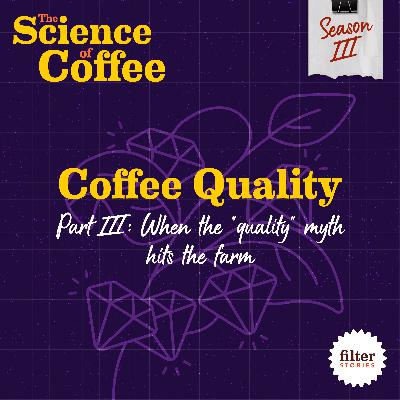
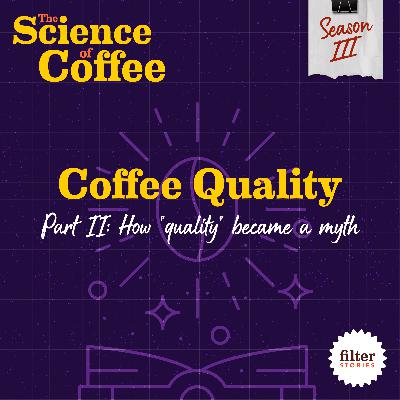
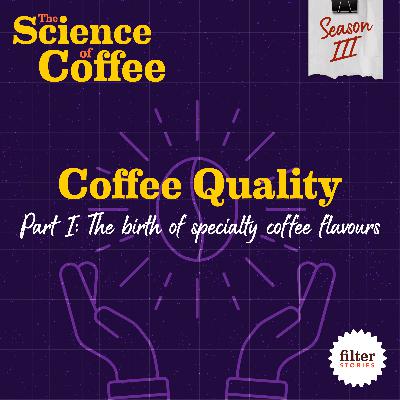
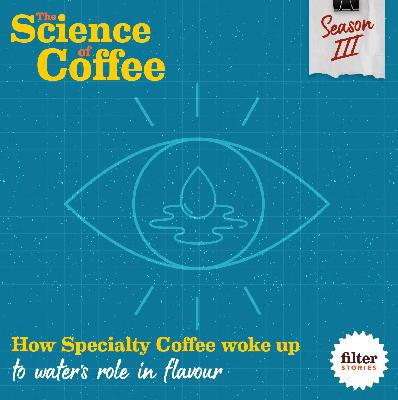
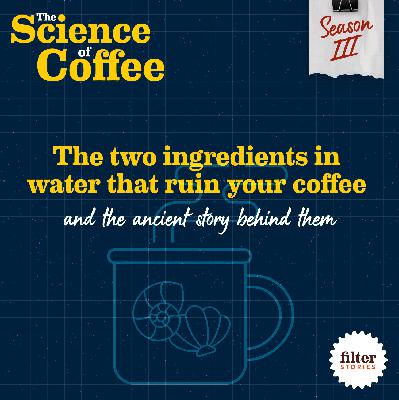
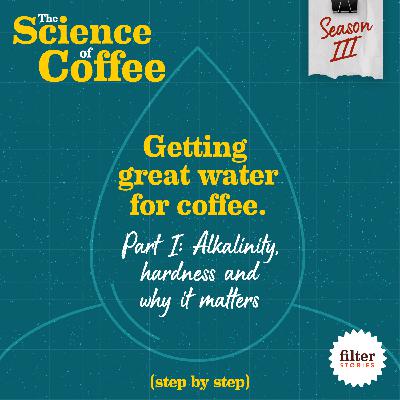
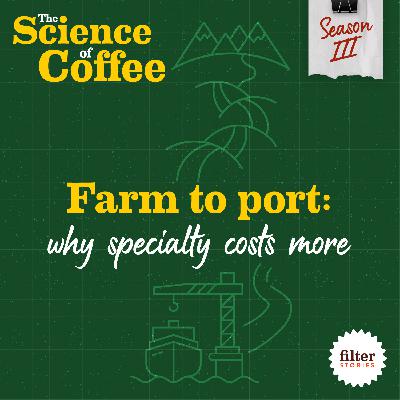
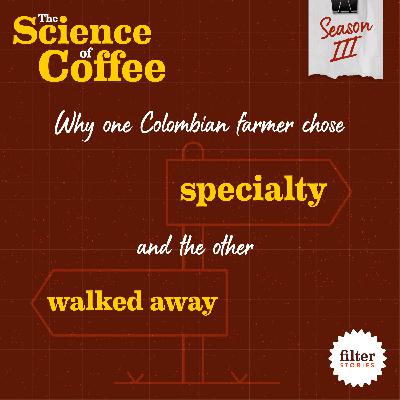
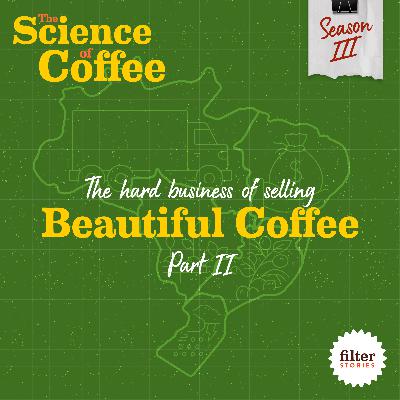
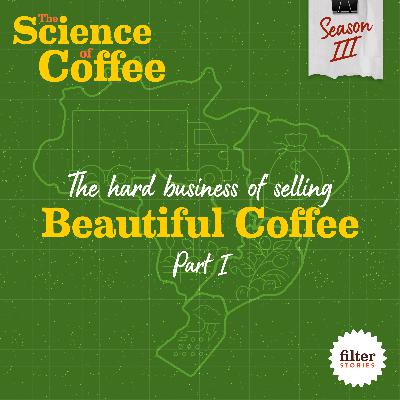
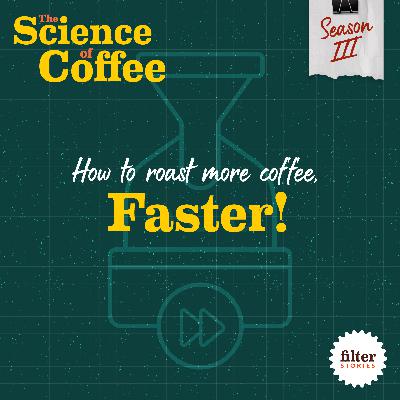
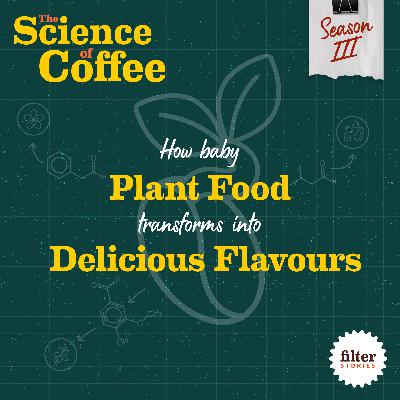

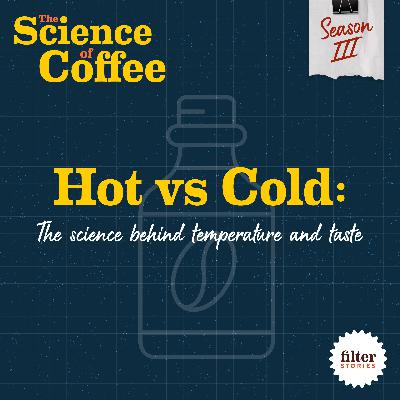
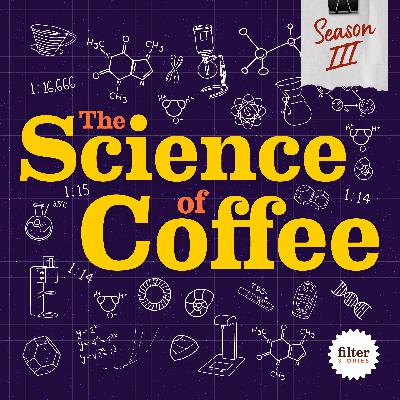







why it doesn't work?? doesn't play..!!!
This is the podcast of specialty coffee that I ever long for:) James is such a good story teller. Appreciated xoxo
Very powerful and personal look at the challenge facing Barista championship contestants from less well off backgrounds. Martin's spirit is infectious and it's heart warming to hear his journey <3
Powerful investigative story telling focused on the coffee industry & the people in it. I highly recommend subscribing and look forward to the next episodes.